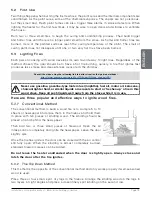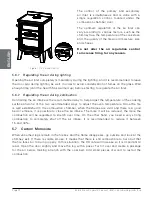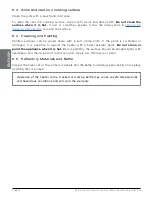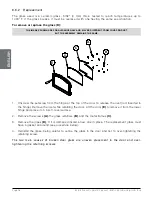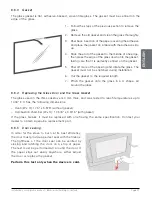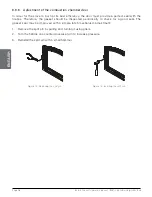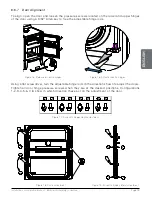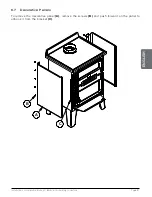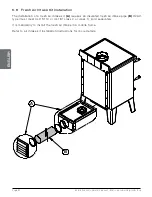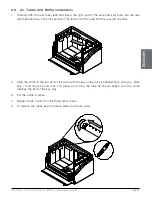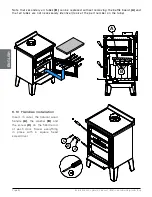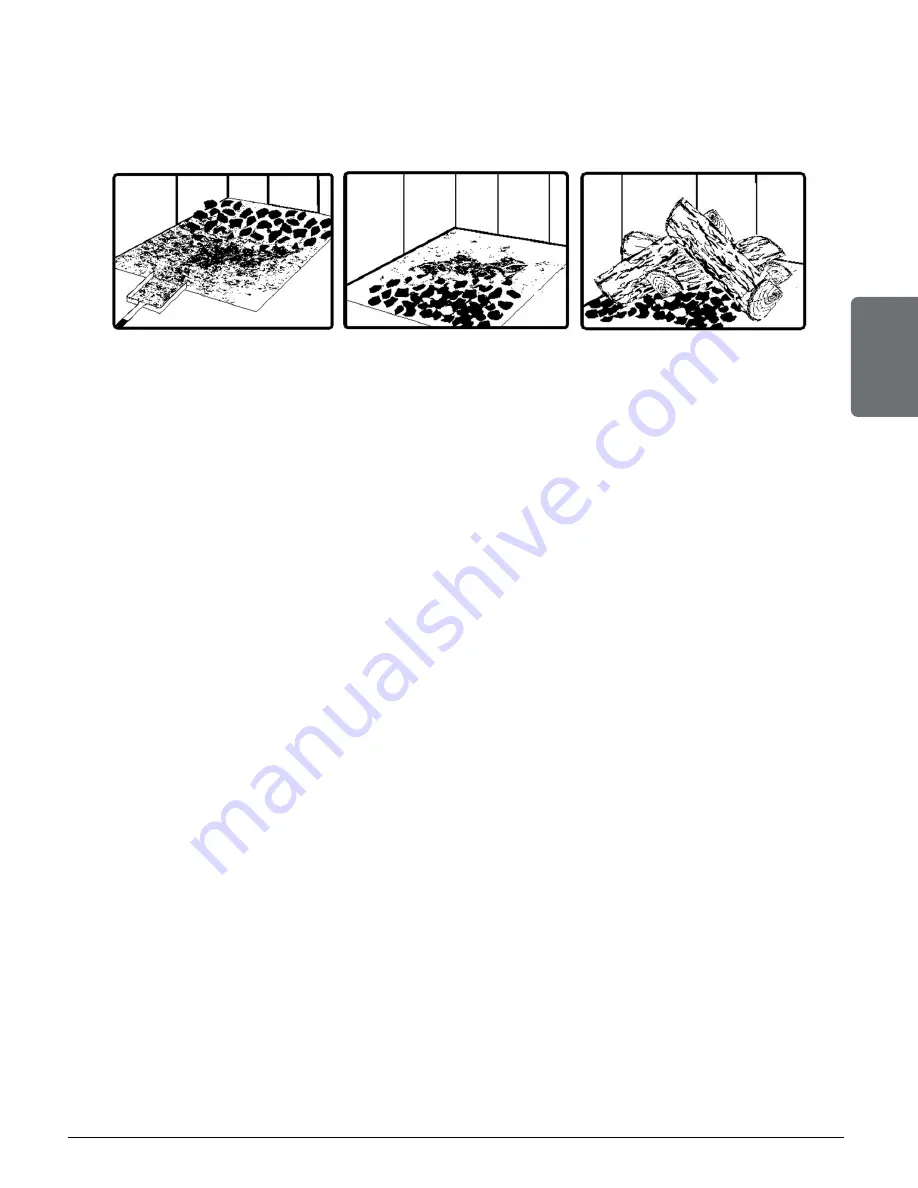
Page 21
Installation and operation manual - Bistro woodburning cookstove
ENGLISH
5.5 Rekindling a Fire
Generally, when you need to cook, it is time to reload. Remove excess ash from the front of
the firebox and bring the ashes forward. Place a new load of wood on, and at the back of the
embers. Open the air control completely and close the door.
Raking the coals is useful for two reasons. First, it brings them near where most of the combustion
air enters the firebox. This will ignite the new load quickly. Secondly, the charcoal will not be
smothered by the new load of wood. When the embers are simply spread inside the combustion
chamber, the new load smoulder for a long time before igniting.
Close the air control only when the firebox is full of bright turbulent flames, the wood is charred,
and its edges are glowing.
The heater should not be left unattended during ignition and the fire should not burn at full
intensity for more than a few minutes.
When lighting a new load, the appliance produces a heat surge. This heat boost is useful for
reheating the oven and cast iron cooking surface, but can give a feeling of extra heat in the room
if it is already hot there. Therefore, it is better to have a cooler room than desired to put back
a load of wood for to cook.
5.6 Air Intake Control
Once the firewood, firebox and chimney are hot, air intake can be reduced to achieve a steady
burn.
As the air intake is reduced, the burn rate decreases. This has the effect of distributing the
thermal energy of the fuel over a longer period of time. In addition, the flow rate of exhaust
through the appliance and flue pipe slows down, which increases the duration of the energy
transfer of the exhaust gases. As the air intake is reduced, the flame slows down.
If the flames diminish to the point of disappearing, the air intake has been reduced too early in
the combustion cycle or the wood used is too wet. If the wood is dry and the air control is used
properly, the flames should decrease, but remain bright and stable.
On the other hand, too much air can make the fire uncontrollable, creating very high temperatures
in the unit as well as in the chimney and seriously damaging them. A reddish glow on the unit
and on the chimney components indicates overheating. Excessive temperatures can cause a
chimney fire.
Summary of Contents for DB04815
Page 2: ......
Page 38: ...Page 38 Installation and operation manual Bistro woodburning cookstove ENGLISH ...
Page 63: ...NOTES ...













